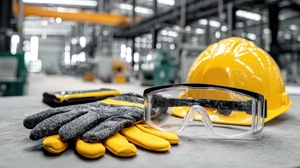OSHA Regulations for the State of New York
Are you employed in the State of New York? Did you know New York has its dedicated OSHA State Plan? Read on for an overview of what this means when you work with hazardous materials and hazardous waste or in the construction industry or any other industry doing work tasks that fall under the purview of OSHA’s health and safety guidelines.
What is OSHA?
OSHA stands for the Occupational Safety and Health Administration, a body that governs employer responsibilities for employee safety and health in the workplace. OSHA has a set of Federal OSHA standards that directly cover most private sector employers as well as some government and local state employers in the United States. In addition, the OSH Act also covers the District of Columbia, Puerto Rico, the Virgin Islands, American Samoa, Guam, Northern Mariana Islands, Wake Island, Johnston Island, and the Outer Continental Shelf Lands as defined in the Outer Continental Shelf Lands Act.
OSHA State Plans
Furthermore, OSHA coverage also takes the form of an OSHA-approved State Plan. With a state plan, OSHA gives authority to the individual states to operate health and safety regulations and programs that are unique and customized to the state and may or may not differ from Federal OSHA standards. According to the OSHA website, “Section 18 of the OSH Act encourages states to develop and operate their own job safety and health programs and precludes state enforcement of OSHA standards unless the state has an OSHA-approved State Plan.”
At present, six State Plans have been developed to cover the safety and health of only state and local government workers, while 22 State Plans covering both private sector and state and local government workers have been implemented.
New York OSHA State Plan
The state of New York is one of the six states that has in place an OSHA-approved State Plan that covers only state and local government employees. However, federal government employees including civilian workers on military bases and those individuals employed by the United States Postal Service are exempted from the New York State Plan, and individuals employed by the federal government must adhere to and comply with Federal OSHA Standards.
The implementation of the New York State Plan is overseen by the New York Public Employee Safety and Health (PESH) Bureau, a part of the New York Department of Labor. The Code of Federal Regulations (CFR) gives a summary of the New York State plan under 29 CFR 1952.24. OSHA has the right to monitor the New York State Plan and any alternative standards as per Section 18(f) of the OSH Act.
Private Sector Employees in New York
All private-sector employees in New York fall under the purview of OSHA and must comply with the rules and regulations as well as safety training requirements as proposed by Federal OSHA standards.
New York PESH and OSHA Coverage
The New York OSHA State Plan has incorporated all Federal OSHA standards as applicable to state and local government employees. However, the Commissioner in consultation with the Hazard Abatement Board, retains authority to change or develop different state standards to ensure the health and safety of New York workers employed by the state or local government organizations.
To date, the New York State Plan under the guidance of PESH had adopted the following unique standards to enhance the safety and health of workers to whom the State Plan covers.
- Workplace Violence Prevention – 12 NYCRR Part 800.6
- Emergency Escape and Self-Rescue Ropes and System Components for Firefighters (in cities below one million residents) – 12 NYCRR Part 800.7
- Permissible Exposure Limits – 12 NYCRR Part 800.5
- Right-to-Know – 12 NYCRR Part 820
- Recording and reporting of occupational injuries and illnesses - 12 NYCRR Part 801
Additional Support Given by the New York State Plan
The New York PESH also provides support and guidance to employers and employees on
- Enforcement programs that use the Field Operations Manual (FOM) for policy guidance;
- Voluntary and partnership/cooperative programs; and
- Informal conferences and appeals.
For more information, on the New York State Plan click here. For information related to worker protection including their safety and health, visit this webpage.

 EN |
EN |  ES
ES























































































































